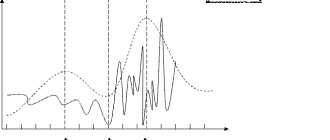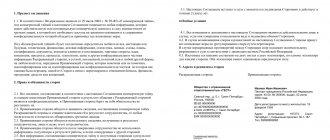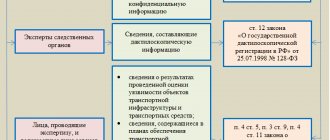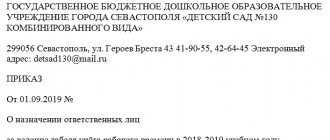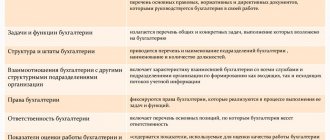What is considered a trade secret
Companies have the right to independently decide what information to classify as confidential commercial information. In most cases, this is everything that concerns the financial activities of the organization, including salaries, taxes, income, expenses, content and amounts of contracts, agreements and transactions, as well as what relates to the property of the enterprise, production technologies and processes, and work results. In addition, data included in the personal files of employees and other personnel documentation can also be classified as a trade secret.
https://youtu.be/VOCekwzWDxM
Regulations on confidential information (trade secrets) of an open joint stock company
Approved by the Board of Directors of JSC "______________" Minutes dated ________
POSITION
about confidential information (trade secrets)
Open joint-stock company "______________"
1. General Provisions
1.1. These Regulations regulate, in accordance with the Civil Code of the Russian Federation, the Federal Law “On Trade Secrets”, other federal laws and regulations, relations related to the protection and use of confidential information (trade secrets) of the open joint-stock company ____________ (hereinafter referred to as the Company).
1.2. Confidential information (trade secret) of the Company - information about persons, objects, facts, events, phenomena and processes, regardless of the form of their presentation and existence, classified as such in accordance with these Regulations, having actual or potential commercial value due to its unknownness to third parties , restrictions on access and disclosure of which are taken in accordance with these Regulations.
1.3. The Company has the exclusive right to use confidential information (trade secrets) by any means not prohibited by law at its own discretion.
1.4. In accordance with these Regulations, the Company takes measures to protect confidential information (trade secrets) and limit access to it by third parties.
1.5. The purpose of protecting confidential information (trade secrets) is to ensure the economic and legal security of the Company.
1.6. If, in connection with the implementation of its activities, the Company becomes aware of information that constitutes a state secret in accordance with the legislation of the Russian Federation, the Company is obliged to take measures to protect it in accordance with the Federal Law “On State Secrets” and other regulatory legal acts on state secrets.
2. Trade secret of the Company
2.1. The commercial secret of the Company is the following information:
2.1.1. Data from the Company's primary accounting documents.
2.1.2. Contents of the Company's accounting registers.
2.1.3. Contents of the Company's internal financial statements.
2.1.4. Transactions entered into and completed by the Company, including contracts, their subject matter, content, price and other essential terms, information about suppliers of raw materials, buyers of finished products, the quantity of raw materials supplied, the amount of products sold.
2.1.5. Information about current and other accounts opened in credit institutions, including in foreign currency, about the movement of funds in these accounts and about the balance of funds in these accounts, information about existing deposits in banks, including in foreign currency (bank secrecy).
2.1.6. Production secrets (know-how) and other information constituting a production secret.
2.1.7. Other information classified as a trade secret in accordance with these Regulations.
2.2. Any other information, with the exception of information that, in accordance with the law, cannot be classified as a trade secret, may be classified as a trade secret by decision of the General Director of the Company.
2.3. The following information cannot be classified as a trade secret:
2.3.1. Constituent documents of the Company and Agreement on the establishment of the Company.
2.3.2. Registration certificates, licenses, patents and other documents giving the right to engage in entrepreneurial activities.
2.3.4. Documents on solvency;
2.3.5. Information about the number and composition of the Company’s employees, their wages and working conditions, as well as the availability of available jobs.
2.3.6. Documents on payment of taxes and obligatory payments.
2.3.7. Information about environmental pollution, violation of antimonopoly legislation, non-compliance with safe working conditions, sales of products harmful to public health, as well as other violations of the legislation of the Russian Federation and the amount of damage caused, if these facts are established by a decision (sentence) that has entered into legal force ) court, arbitration court.
2.3.8. Information on the participation of the organization's officials in production cooperatives, partnerships, limited liability companies, joint stock companies and other organizations engaged in business activities.
2.3.9. Taxpayer Identification Number (TIN).
2.3.10. Contents of the external financial statements of the Company, including the contents of: balance sheet; profit and loss statement; appendices to them, provided for by regulations; an auditor's report confirming the reliability of the Company's financial statements; explanatory note to the external financial statements.
2.3.11. Other information that cannot be classified as a trade secret in accordance with the legislation of the Russian Federation.
2.4. Classifying the information specified in clause 2.1 of these Regulations as information constituting a trade secret of the Company does not require the issuance of any other acts besides these Regulations.
2.5. The classification of information specified in clause 2.2 of these Regulations as information constituting a commercial secret of the Company is carried out by issuing an order of the General Director of the Company in each specific case.
The initiative to issue an order from the General Director to classify this or that information as a trade secret of the Company may come from shareholders of the Company, heads of structural divisions of the Company, heads of separate structural divisions of the Company, and contractors of the Company.
2.6. Trade secrets do not include information disclosed by the Company independently or with its consent.
3. Official secret of the Company
3.1. The Company's official secret consists of any information, including information contained in official correspondence, telephone conversations, mail, telegraph and other messages transmitted via electrical and postal networks, which became known to an employee of the Company in connection with the performance of his work duties. responsibilities.
3.2. Official secrets do not include information disclosed by the Company independently or with its consent, as well as other information, restrictions on access to which are not allowed in accordance with the legislation of the Russian Federation.
4. Banking secrecy of the Company
4.1. Bank secrecy consists of information about the status of a bank account and bank deposit, account transactions and information about clients.
4.2. Information constituting bank secrecy can only be provided to the Company or its representatives. Such information may be provided to government bodies and their officials only in cases and in the manner prescribed by law.
5. Tax secrecy of the Company
5.1. Tax secret consists of any information about the Company transferred to tax authorities, bodies of state extra-budgetary funds and customs authorities.
5.2. The following information does not apply to tax secrets:
5.2.1. Information disclosed by the Company independently or with its written consent.
5.2.2. Taxpayer identification number information.
6. Protection of confidential information of the Company
6.1. The protection of the Company's confidential information consists of taking a set of measures aimed at limiting access to confidential information of third parties, preventing unauthorized disclosure of confidential information, identifying violations of the Company's confidential information regime, suppressing violations of the Company's confidential information regime, attracting persons who violate the Company's confidential information regime, to established liability.
6.2. A mandatory condition of employment contracts concluded with the Company's employees is the condition that the employee observes official and commercial secrets.
6.3. Each employee of the Company, when hired, is warned against receipt of responsibility for violating the regime of official and commercial secrets.
6.4. Heads of structural units are required to provide instructions to their directly subordinate employees at least once a quarter on how to comply with the regime of official and commercial secrets. A newly hired employee undergoes training upon hiring. Data on the briefing is recorded in a special journal.
6.5. Agreements concluded by the Company in the person of any authorized persons must contain a condition that counterparties maintain confidentiality.
6.6. In the working and other premises of the Company, conditions are created that limit access to confidential information of third parties and unauthorized disclosure of confidential information, including the installation of technical means of protection against unauthorized access to information (safes and metal boxes for storing documents, etc.).
6.7. A security service is being created in the Company.
6.8. The Company is taking measures to identify facts of violation of the Company's confidential information regime.
6.9. The Company takes all methods permitted by law to suppress identified violations of the Company’s confidential information regime.
6.10. Persons guilty of violating the Company's confidential information regime are held accountable.
7. Procedure for use and provision
confidential information of the Company
7.1. The use of confidential information of the Company is permitted only by those employees of the Company who need access to such information due to the functions they perform.
7.2. Providing confidential information of the Company to third parties is possible only with the approval of the General Director of the Company.
7.3. The Company's external accounting reports are public. The publicity of financial statements consists of their publication in newspapers and magazines accessible to users of financial statements, or the distribution among them of brochures, booklets and other publications containing financial statements, as well as their transfer to the territorial bodies of state statistics at the place of registration of the organization for provision to interested users. Annual financial statements are published by the Company no later than June 1 of the year following the reporting year.
7.4. The Company submits annual financial statements in accordance with the constituent documents to shareholders, as well as to territorial state statistics bodies at the place of their registration. Financial statements are presented to other executive authorities, banks and other users in accordance with the legislation of the Russian Federation.
7.5. Other cases of providing confidential information are provided for by the current legislation of the Russian Federation.
8. Final provisions
8.1. Persons guilty of violating the Company's confidential information regime are subject to criminal, administrative, disciplinary and civil liability in accordance with the established procedure.
8.2. In everything else that is not regulated by these Regulations, the provisions of the current legislation of the Russian Federation apply.
In order to ensure the activities of law enforcement and regulatory authorities, Art. 5 of the Federal Law “On Trade Secrets” defines information that cannot constitute a trade secret:
- contained in the constituent documents of a legal entity, documents confirming the fact of making entries about legal entities and individual entrepreneurs in the relevant state registers;
— contained in documents giving the right to carry out entrepreneurial activities;
— on the composition of the property of a state or municipal unitary organization, government institution and on their use of funds from the relevant budgets;
— about environmental pollution, the state of fire safety, the sanitary-epidemiological and radiation situation, food safety and other factors that have a negative impact on ensuring the safe operation of production facilities, the safety of every citizen and the safety of the population as a whole;
— on the number, composition of employees, the remuneration system, working conditions, including labor protection, indicators of industrial injuries and occupational morbidity, and the availability of vacancies;
— about the debt of employers in payment of wages and other social benefits;
— about violations of the legislation of the Russian Federation and facts of prosecution for committing these violations;
— on the conditions of competitions or auctions for the privatization of state or municipal property;
- on the size and structure of income of non-profit organizations, on the size and composition of their property, on their expenses, on the number and remuneration of their employees, on the use of gratuitous labor of citizens in the activities of a non-profit organization;
— on the list of persons who have the right to act without a power of attorney on behalf of a legal entity;
— the mandatory disclosure of which or the inadmissibility of restricting access to which is established by other federal laws.
However, government bodies (Federal Assembly, court, prosecutor's office, FSB, tax inspectorate) and local government bodies (mayor's office, local administrations) have the right to request information that constitutes a trade secret. In this case, the above organizations must submit a reasoned request indicating the purpose, legal basis and deadline for providing the requested information.
In case of refusal to provide the requested information, this body has the right to request this information in court.
Procedure for protecting classified information
- To ensure that secret information does not fall into the wrong hands, the organization first determines the circle of people who have access to it, and then develops measures designed to protect these secrets from outsiders.
- After this, an order is issued that sets out the requirement to maintain trade secrets and the conditions that must be met within the framework of this requirement.
- Next, a corresponding contract or non-disclosure agreement is concluded with each employee who works with classified information. Sometimes the management of an enterprise sets a special premium for working with confidential information.
The procedure for classifying information as a trade secret
To give information a special status, it is necessary to establish a certain regime in relation to it, which involves taking the following measures:
- determination of the list of secret data;
- restricting access to them (establishing a procedure for handling and monitoring its compliance);
- determining the list of persons with access to data;
- inclusion in employment contracts with employees of provisions on the procedure for working with protected information, liability for their violation;
- inclusion in contracts with counterparties of language regarding its disclosure;
- protection of material media and documents.
Sample wording in an employment contract with an employee
Sample wording in an agreement with a counterparty
How to form an order, document features
If you are reading this material, then you are most likely faced with the task of drawing up an order on non-disclosure of trade secrets. Before giving you a detailed idea of the document, we will provide general information that is relevant to all such administrative acts.
To begin with, keep in mind that now almost any orders can be written in any form (with the exception of those created in government agencies - they usually use unified forms).
However, if your company has a document template developed and approved in the accounting policy, make an order according to its type.
Next, keep in mind that in most cases, an ordinary piece of paper of any format convenient for you is suitable for the document - preferably A4 or A5 or letterhead - again, if such a condition is established in the company’s regulatory documents. The order can be written manually (legibly, without blots, inaccuracies, errors or edits) or typed on a computer, but if you created an electronic text, it must be printed - this is necessary so that the manager and responsible employees can put their signatures on it.
Place a stamp on a document only when the requirement to use stamps for approval of internal documentation is specified in the local regulations of the company.
Make the order in one original copy, but if necessary, duplicate the document (for example, to transfer it to the structural divisions of the company), duly certified.
Enter information about the order in the administrative documentation journal. Place the finished form in a folder with other similar papers and keep it for the period prescribed by law or established in the regulatory documents of your organization.
General provisions
1.1. This regulation on trade secrets of [name of organization] (hereinafter referred to as Regulations, Organization) was developed on the basis of Federal Law No. 98-FZ of July 29, 2004 “On Trade Secrets” in order to ensure the economic security of the organization.
1.2. This Regulation establishes general rules on information constituting a commercial secret (hereinafter referred to as the Trade Secret), the regime of confidential information and the conditions for its protection, as well as penalties applied for violation of the requirements established by this Regulation.
1.3. A trade secret is understood as information about the activities of an organization that has actual or potential commercial value and the disclosure of which among an unlimited number of people may adversely affect the effectiveness of the organization.
1.4. This Regulation applies to all employees of the organization.
back to contents
Arbitrage practice
Failure to prove at least one of the provisions specified by the plenum of the Armed Forces of the Russian Federation entails the recognition of the dismissal as illegal and the reinstatement of the employee at work, including in connection with:
- improper compliance by the employer with the requirements of the Law “On Trade Secrets” in terms of taking measures aimed at protecting information classified as CT (for example, the determination of the Supreme Court of the Udmurt Republic dated May 25, 2011 in case No. 33-1796);
- lack of proof of the fact of disclosure of confidential information (decision of the Moscow City Court dated December 12, 2011 in case No. 4g/8-10961/2011);
- improper fulfillment by the employer of the requirements of the Law “On Trade Secrets” in terms of obtaining from the relevant employee an obligation not to disclose confidential information (decision of the Moscow City Court dated June 22, 2011 in case No. 33-19046).
***
Thus, the Regulation on Trade Secrets is not a mandatory document for an organization. However, its drafting and approval is recommended in order to protect the interests of the owner of confidential information, including the employer of the employee who disclosed the secret information. Dismissal of this employee if the organization has not taken appropriate measures to protect information constituting a trade secret is very problematic.
There are no official instructions or standard forms of the Regulation on Trade Secrets; this document is drawn up in free form, taking into account the provisions of current legislation.


